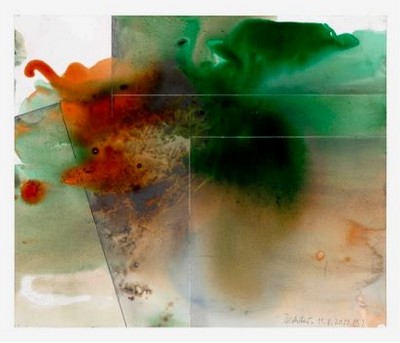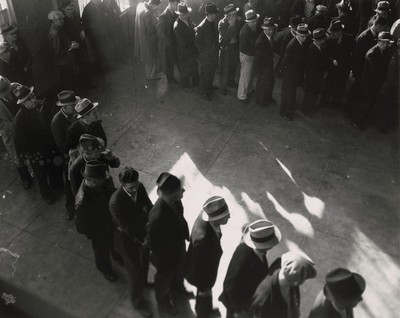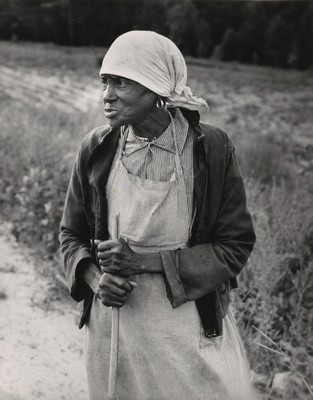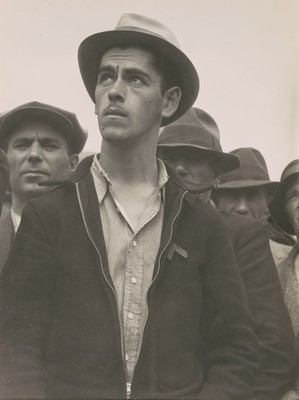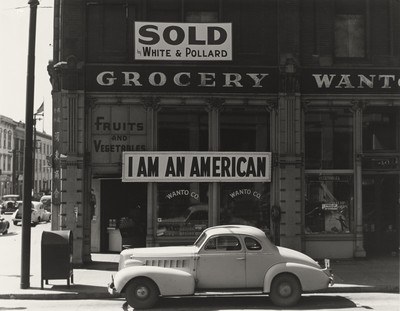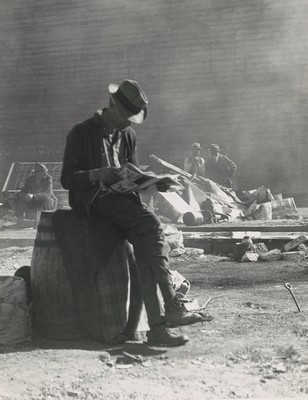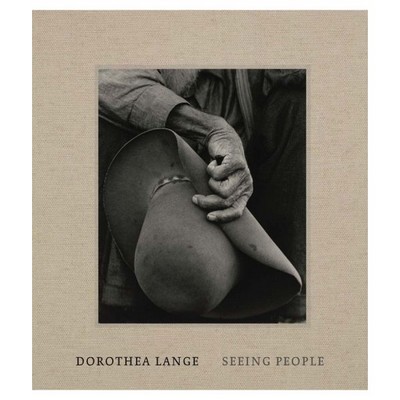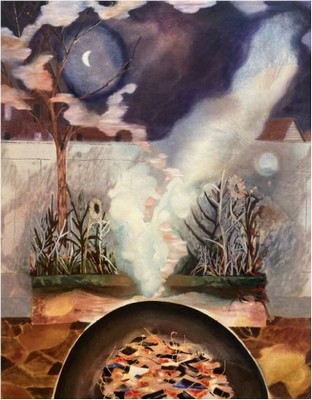Art Basel Miami Beach 2023
Miami Beach Convention Center
December 8 – 10, 2023
For the 2023 edition of Art Basel’s premier global fair in the Americas, Art Basel brings together 277 leading international galleries to present the highest quality artworks across all media – from painting and sculpture to photography and digital works – by artists ranging from early-twentieth-century Modern pioneers to contemporary practitioners. Nearly two-thirds of this year’s galleries hail from North and South America, joined by an exceptional array of exhibitors from Europe, Asia, and Africa.
Man Ray, 1974
Presented by Vedovi Gallery
Courtesy of Vedovi Gallery
Vedovi Gallery is a leading secondary market gallery specializing in works by modern, post-war, and contemporary European and American artists. Renowned for its fine connoisseurship in the trade of high quality works, the gallery has gained a solid reputation and expertise over the past 25 years.
Floating Zone No.2, 2023
Presented by Altman Siegel
Courtesy of the artist and Altman Siegel, San Francisco
Altman Siegel was founded by Claudia Altman-Siegel in 2009. The program focuses on internationally recognized, museum-level artists whose work contributes to the cultural dialogue domestically and abroad.
Untitled, 2014
Presented by Barbara Mathes Gallery
Courtesy of Barbara Mathes Gallery
Barbara Mathes Gallery was founded in 1978 and specializes in paintings, sculpture, and works on paper by modern and contemporary masters. The gallery is known for its tightly focused one-person shows and for imaginative thematic exhibitions that present artists in new and illuminating contexts.
Untitled, 2023
Presented by Carlos/Ishikawa
Courtesy the artist and Carlos/Ishikawa, London
© Antonio Tarsis 2023
Photography by Damian Griffiths
Founded in 2011, Carlos/Ishikawa’s program is dedicated to considered and ambitious exhibitions that offer diverse artists’ perspectives on structural, socio-cultural, and political questions. The program focuses on international artists with often wide-ranging, multi-disciplinary and experimental practices.
Untitled, 2022
Presented by Casa Triângulo
Coutersy Casa Triângulo, São Paulo, Brazil
Photographer Credit: Filipe Berndt
Inaugurated in 1988, Casa Triângulo figures as one of the most renowned and respected Brazilian contemporary art galleries. The gallery plays an important role on the construction and consolidation of the careers of some of the most prominent names of the contemporary scene.
____________________________________________________
Noah Horowitz, CEO, Art Basel, says: ‘Having led our Miami Beach fair for six years as Director, Americas, I know first-hand the galvanizing role our show plays within the creative ecosystem of Miami, the broader region, and the global arts community. Art Basel Miami Beach continues to exceed expectations year after year, in the quality and range of the art on view, and in the singularly magnetic experience within and beyond the halls which continues to attract both established and entirely new audiences and bring out the best of the local cultural scene each December. Our offering this year demonstrates yet again the strength of our show as an engine of the world of art in the Americas and globally, and as an utterly transformative cross-cultural experience – made possible by our premier exhibitors, our world-renowned cultural partners and collaborators in Miami Beach and South Florida, and our exceptional team.’
Spearheading the 2023 edition, Vincenzo de Bellis, Director, Fairs and Exhibition Platforms, says: ‘Visitors to our Miami Beach show this year will be met with surprises, and an expanded platform for discovering a diversity of artistic voices and perspectives, which echo and reverberate across Miami Beach’s ever-growing cultural offer. With new participants from Mexico to Poland and Egypt, and a program both within and beyond the fair like we have never done before, there is an injection of freshness to the fair, and a vigor of experience which we look forward to playing out in full in December.’
____________________________________________________
Eclipse #9, 2023
Presented by Casas Riegner
Courtesy Casas Riegner, Bogotá.
Casas Riegner was established in Miami in 2001. In 2004, after achieving an important position within the Miami art world, the gallery embarked on a challenging project: the promotion and dissemination of contemporary art within Colombia and abroad.
Caminho pelas nações com o corpo cheio de gente, 2020
Presented by Galería Elba Benítez
Cortesy Ernesto Neto and Galería Elba Benítez, Madrid
Photo: Jonás Bel
Since 1990, Galería Elba Benítez has freely embraced the diverse and ever-changing facets of contemporary art. The gallery exhibits artists working with a wide range of media – installation, sculpture, video, photography, painting, performance, collective action – while also striving to explore channels of artistic expression formed by the interplay of art with other disciplines, such as architecture, film, tourism, urbanism and the production of projects for public spaces. Above all, Galería Elba Benítez remains committed to art’s fluid capacity to change with changing times.
The Mouth of Krishna #60133, 2015
Presented by Galería Elvira González
Courtesy Galería Elvira González
The Elvira González Gallery opens in Madrid in 1994. Founded by Elvira González, who owned and directed the Theo Gallery for 30 years (from 1966 to 1991) it is currently directed by her daughters, Elvira Mignoni and Isabel Mignoni. The gallery specializes in modern and contemporary European and American art and has produced important exhibitions.
Endless Oceans (1), 2023
Presented by Galerie Eva Presenhuber
Courtesy the artist and Galerie Eva Presenhuber, Zurich / Vienna
© the artist
Photo: Stefan Altenburger Photography, Zürich
Galerie Eva Presenhuber is a leading contemporary art gallery located in Zurich and Vienna. Eva Presenhuber is committed to representing and nurturing an international and intergenerational roster of artists that reflects both historical and current discourses within contemporary art.
Marx cat with blue blanket, 2023
Presented by Galerie Nagel Draxler
Courtesy: the artist and Galerie Nagel Draxler Berlin/Cologne/ Munich
Galerie Nagel Draxler (formerly Galerie Christian Nagel) was founded in Cologne in 1990 and operates in Cologne, Berlin, Munich and Meseberg. It is a gallery that has a history, a present and a future. An emphasis lies on an established artist generation, that has been showing with them since the beginning and whose work has been strongly influential for following generations.
____________________________________________________
The show's main sector will feature 222 of the world’s leading galleries, showcasing painting, sculpture, drawing, installation, photography, video, and digital works of the highest quality, including 10 exhibitors presenting editioned works, prints, and multiples.
Dedicated to galleries presenting works created within the last three years by one, two, or three artists, the Nova sector will feature 21 presentations from 22 galleries.
This year’s Positions sector will feature 16 standalone presentations by emerging artists from around the world. Highlights include: a presentation of Brazilian artist Allan Weber, known for his work on everyday life in Rio de Janeiro's favelas, including a new photo series shot during the COVID-19 pandemic, when Weber worked as a mobile food app delivery driver, presented by Galatea (Rio de Janeiro); four works by Mexican artist Andrew Roberts made especially for the fair and exploring the ocean as a geopolitical space of violence, including a three-channel video work, in which an assembly of computer generated and animated sea monsters hauntingly sing to their extinction, an animatronic sculpture depicting an aquatic humanoid creature in a state of deep sleep, and two large scale bas-reliefs made of silicone, presented by Pequod Co. (Mexico City); a new series of photographs by American artist Texas Isaiah, in which transmasculine, nonbinary, and gender-expansive subjects act in a lush landscape, shown alongside an altar installation dedicated to Ki'tay Davidson, a Black transmasculine disability justice advocate, and Blake Brockington, the first openly trans high school homecoming king in North Carolina, presented by Residency Art Gallery (Inglewood); and an installation of mixed-media wall and floor sculptures by Brazilian artist Mano Penalva, in dialogue with the wooden beaded backrests used by professional drivers in Brazil and various parts of the world, presented by Llano (Mexico City).
____________________________________________________
Sky Dive, 1991
Presented by GRAY
Courtesy of GRAY
GRAY: Established in Chicago in 1963, Richard Gray Gallery specializes in modern and contemporary artwork and represents an international roster of artists who work in a variety of media, including sculpture, photography, installation and painting. Expanding to New York City in 1997 and opening a capacious second location in Chicago in 2017, Gray is identified with its support of leading contemporary artists and offers artworks of exceedingly high quality.
Black and White Decoys, 1940-41
Presented by Hirschl & Adler Modern
Courtesy Hirschl & Adler Modern
Photo by Eric W. Baumgartner
Hirschl & Adler Modern, founded in 1981, specializes in art from 1913 to the present, with a strong emphasis on American Modernism and the post-war period. It also represents a select group of established and mid-career contemporary artists who are featured regularly through scheduled solo and group exhibitions in its 11,000 square-foot gallery space at the crossroads of 57th Street and Madison Avenue in New York City.
Fulton Leroy Washington (Mr. Wash) From Behind the Glass, 2022
Presented by Jeffrey Deitch
Courtesy of the artist and Jeffrey Deitch, New York and Los Angeles
Photo by Charles White
Jeffrey Deitch began his art career with a small gallery in Lenox, Massachusetts, in 1972. After working as Assistant Director at the John Weber Gallery from 1974-76 and earning an MBA at the Harvard Business School, he developed and co-managed Citibank’s Art Advisory Service from 1979-88. Deitch established his own art advisory and private dealing business in 1988. From 1993-2000, he represented Jeff Koons and co-produced the artist’s Celebration series. In 1996, he opened Deitch Projects, which presented more than 250 exhibitions and projects. He closed the gallery in 2010 to become Director of the Museum of Contemporary Art, Los Angeles. In 2014, Deitch reopened his New York gallery, focusing on projects with major artists and curated thematic exhibitions. Deitch opened his gallery in Los Angeles, designed by Frank Gehry, in September 2018. In addition to his commercial career, Deitch has curated influential exhibitions in museums and foundations.
Transformation Painting, 1973
Presented by Jessica Silverman
Courtesy of the artist and Jessica Silverman, San Francisco
Jessica Silverman is a contemporary art gallery with an international reputation for curating compelling exhibitions, building artists’ careers, and collaborating with collectors who are keen on positive provenance. Their mission is to support artists whose relevance to contemporary culture is such that museums want to understand and embrace their work.
Untitled, 1967
Presented by Jorge Mara - La Ruche
Courtesy Jorge Mara - La Ruche
The Jorge Mara • La Ruche Gallery, inaugurated in late 2001, is a new space continuing the tradition of the Galería Jorge Mara, renown in Buenos Aires in the 1980s, and based in Madrid during the 1990s. The new space focuses mainly on the work of established artists active in mid twentieth century Argentinean and Latin American art, while also spotlighting the work of emerging artists.
____________________________________________________
Featuring works created before 2000, Survey will host 17 galleries. Highlights include: a tribute presentation to Liliana Maresca, the iconic Argentine sculptor, painter, and performance artist who was highly influential to the country’s artistic scene in the 1980s and 1990s, presented by Rolf Art (Buenos Aires); a solo presentation of Karen Finley, Karen Finley: REDACTED, centered on the artist's seminal interactive installation, GO FIGURE, which she installed at the Museum of Contemporary Art, Los Angeles, in 1997 during her protracted legal battle with the National Endowment for the Arts, and the subsequent presentation of which at the Whitney Museum was canceled in the wake of the artist’s Supreme Court defeat, presented by Freight+Volume (New York); a solo booth of American artist Vivian Browne’s landmark abstract Africa paintings, made following an influential trip to Nigeria in 1971, presented by Ryan Lee (New York); and a series of eight erotically charged paintings of factory laborers from the estate of Swiss artist Rudolf Maeglin, made between 1932 and 1948 and never-before-seen in the U.S., including two rare large-scale works, in which the artist's unique provocation of gender reverberates with urgency, presented by Meredith Rosen Gallery (New York).
____________________________________________________
Oriental Blue and black Mist Satin, 2019
Presented by Mennour
Courtesy Mennour
Mennour is an art gallery founded in Paris in 1999. Through its exhibitions, its projects developed in partnership with cultural institutions, its presence in major international art fairs, and its network of collaborators throughout the world, the gallery is present from Asia to the Americas, and from Africa to the Middle East. Today, it is one of the key actors in contemporary art and the art market.
Double Life, 2023
Presented by Pilar Corrias
Courtesy the artist and Pilar Corrias, London
Pilar Corrias opened her eponymous contemporary art gallery in 2008. The gallery has worked with artists with the central aim of allowing their work to grow both in terms of the production of new projects and the making of exhibitions. Pilar Corrias opened her first gallery on Eastcastle Street in London’s Fitzrovia, designed by Rem Koolhaas and began representing a small group of artists she previously had worked with: Philippe Parreno, Keren Cytter, and Tala Madani. At the time, she was the first woman to open a new gallery in the West End of London for a decade. In 2021, a second London gallery space was opened at 2 Savile Row designed by Hesselbrand. In 2023, a new gallery space at 49–51 Conduit Street opened, designed by Cowie Montgomery, replacing Eastcastle Street.
WHEN THE WIND OF CHANGE BLOWS, 2023
Presented by Sperone Westwater
Courtesy of Sperone Westwater
Sperone Westwater is a contemporary art gallery on the historic Bowery in New York City. In 2010 the gallery inaugurated an award-winning building designed by Foster and Partners. Originally founded in 1975 on Greene Street in Soho, Sperone Westwater has recently celebrated 45 years of groundbreaking exhibitions that have showcased a European avant-garde and renowned American artists.
I'm up and down like a yo-yo, 2003
Presented by STPI
Courtesy of the artist and STPI – Creative Workshop & Gallery, Singapore
STPI is a creative workshop and contemporary art gallery based in Singapore. Established in 2002, STPI is committed to promoting artistic experimentation in the mediums of print and paper, making it one of the most cutting-edge destinations for contemporary art in Asia.
ART BASEL MIAMI BEACH
Miami Beach Convention Center
1901 Convention Center Drive, Miami Beach, FL 33139

